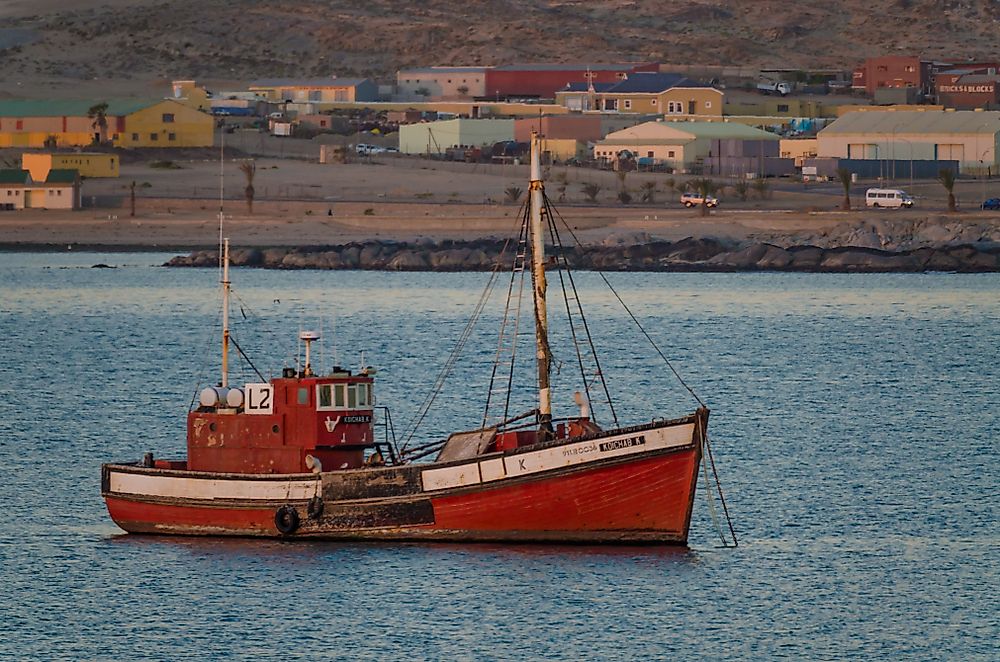The Biggest Industries In Namibia

The Republic of Namibia is a southern African country bordering the Atlantic Ocean to the west, Angola and Zambia to the north, Botswana to the east, and South Africa to the east and south. The economy of Namibia is based on the modern market sector and also on the traditional subsistence setup. Over 200,000 people in Namibia are skilled workers with a good number of trained professionals and managers. Namibia is ranked as a higher middle income country with a GDP per capita of $5,828 (USD), but lags behind when it comes to income distribution. According to UN and Gini coefficient ranking, Namibia leads the list of countries with highest income inequality. The introduction of free market principles since independence aims at reducing the income inequalities while encouraging the participation of Namibians into the mainstream economy. This includes the involvement of foreign investment to boost the local economy. The main economic sectors include:
Mining
The mining industry is one of the biggest sectors in Namibia accounting for about 25% of the country’s revenue. Despite an abundant supply of minerals such as uranium, zinc, lead, diamond, tungsten, tin, and silver, only 3% of the population is employed in this sector. Fluctuation of world commodity prices also affects the profitability margins and in some cases some mining projects may be abandoned when there is a steady decline in prices.
Diamond mining is the chief contributor of all revenue from the mining industry with a share of 7.2% of the 9.5% that mineral extraction contributes to the GDP of Namibia. The amount of uranium in the country is capable of providing 10% of the world’s uranium output from just two mines. In addition, non-fuel minerals found in the country make it the fourth largest producer in Africa and the fifth largest producer of uranium in the world.
Tourism
Namibia is among the prime tourist destinations in Africa boasting of a large number of wildlife species found nowhere else in the world. Nearly 20% of employments in the country are directly or indirectly related to the tourism industry. The sector contributes to about 14.5% of the country’s GDP and more than one million tourists flock the country’s national parks and other tourist destinations each year. As a renowned ecotourism destination, Namibia’s economy is heavily reliant on its extensive wildlife.
Sport hunting and other extreme sports such as skydiving, sandboarding, and off-road driving are extremely popular in Namibian cities. Lodges and hotels have increased to cater to the new emerging interests as well as accommodate tourists from all over the world. Coastal towns such as Walvis Bay, Swakopmund, and Lüderitz generate income from the tourism sector and service industry. This has boosted the local economies as well as improved the standard of living of the locals.
Manufacturing
The manufacturing sector is the main pillar of the Namibian economy contributing more than 20% of the GDP. This is despite the proliferation of subsidized goods from South Africa, a dispersed population, inadequate local capital, and a semi-skilled labor force. Meatpacking, fish processing, and dairy products processing are some of Namibia’s biggest industries.
A well-developed infrastructure has also led to a larger network and better movement of goods and labor between producers and the market. In addition to this, world-class aviation facilities have made it easier to export perishable goods to outside countries. The ongoing construction of two key artery roads, the Trans-Kalahari highway and the Trans-Caprivi Highway, will open up the region and provide access to Walvis Bay. Walvis Bay is the main deep water port in Namibia and is expected to be an important commercial gateway to the southern African region.
Agriculture
A majority of Namibia’s population depends on subsistence farming for its livelihood with over half the population employed in the agriculture sector. Only about 1% of the land in Namibia is arable. The rural population mainly farms for household use only, which is effectively a cash-less economy. This informal agriculture in rural areas contributes to the high income inequalities experienced in the country, largely because the urban economy is cash-driven whereas the rural economy is not focused on scale.
Even though the GDP per capita of Namibia is five times better than the poorest countries in Africa, the country still imports food to supplement the local produce. The privatization of numerous agricultural enterprises has encouraged foreign investment which increases employment opportunities as well as increase local food production.
Fishing
Namibia has one of the most abundant fishing grounds in the world off the coast on the southern side. The cold waters of the south Atlantic boast of a wide variety of popular fish species such as hake, anchovy, sardines, horse mackerel, and other varieties of sea animals such as rock lobster, tuna, sole, squid, and deep sea crab.
The fishing industry is currently the fastest growing sector in the country, with a huge contribution towards employment opportunities, export earnings and the GDP. Fish farming is being promoted as an alternative and supplement to traditional fishing methods. The government of Namibia has put measures in place to curb over-exploitation of fisheries as was witnessed decades ago where fish stocks had declined to dangerous levels.
Labor
Namibia has an economically active population that is mainly concentrated in the informal sector of the economy. Still, there is a high rate of unemployment since most Namibians do not possess the necessary skills and training to fit in the formal sector. As a result, a large population is dependent on subsistence agriculture.
While Namibia is heavily endowed with natural resources and a relatively skilled population, the overly informal sectors create an imbalance. The high income inequalities are brought about by the disparities of the urban and rural economies. The government of Namibia is pursuing education reforms to help reduce the wage gaps and create a more formal economic setup.











